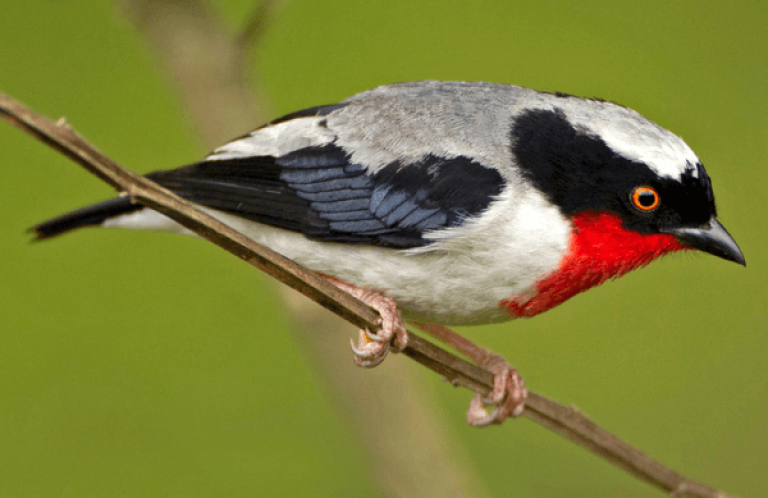First Predator-proof Fence on Kaua'i Completed at Kilauea Point National Wildlife Refuge
 | |
|
(Washington, D.C., December 1, 2014) Rare native plant and animal communities that have inhabited a roughly eight-acre area at the Kilauea Point National Wildlife Refuge—including imperiled bird species found nowhere else on earth—will be protected from predators thanks to the completed installation of a predator-proof fence that stretches almost a half-mile in length.
The effort is a collaboration that includes the U.S. Fish and Wildlife Service's Kaua'i National Wildlife Refuge Complex, American Bird Conservancy, Pacific Rim Conservation, and the Kaua'i Endangered Seabird Recovery Project (a Hawai'i Department of Land and Natural Resources Division of Forestry and Wildlife/Pacific Cooperative Studies Unit project). The National Fish and Wildlife Foundation provided critical funding support.
The state-of-the-art fence took about three months to construct and will keep introduced mammalian predators, including cats, dogs, rats, and mice, out of the area so that native species such as the endangered Nene (Hawaiian Goose), the Moli (Laysan Albatross), and rare plants can flourish again in a protected environment. In addition, the absence of introduced predators make this restored site an appropriate translocation site for the threatened 'A'o (Newell's Shearwater) and for the reintroduction of rare native plants.
This type of fencing has been used with great success in New Zealand and on the island of O'ahu at Ka'ena Point, where predator exclusion resulted in record numbers of seabird chicks fledging in the year immediately following the project's completion, as well as natural colonization by Black Noddy, a seabird species not previously recorded breeding on O'ahu, in its third year. It is hoped that similar outcomes will be achieved on Kaua'i.
"To have planned, broken ground, and finished construction in a two-year timeframe is a phenomenal success and an incredible accomplishment that our partners, ABC and Pacific Rim Conservation, have made possible," stated Shannon Smith, U.S. Fish and Wildlife Service Project Leader.
The planned translocation of Newell's Shearwater is a particularly important aspect of the project. "We have seen a dramatic decline in the population of Newell's Shearwater in recent years due to a range of issues, with an estimated 75 percent decline in the last 15 years," said Dr. André Raine of the Kaua'i Endangered Seabird Recovery Project. "The establishment of a new colony using predator-proof fences is an important management tool to help reverse this decline."
"Predator-proof fencing is a conservation strategy that we are going to see used more and more in Hawai'i as we struggle to deal with widespread non-native predator populations on very large islands," said George Wallace, Vice President of American Bird Conservancy. "One of those species that may particularly benefit is the Newell's Shearwater, which is threatened by non-native predators in their montane nesting areas. Creation of a colony protected from predators will be a major step forward in recovering the species.”
 | |
|---|---|
|
Stretching for about .45 miles, the fence is approximately 6.5 feet tall and encloses an area of 7.8 acres. It is built entirely of stainless steel to resist the harsh marine environment. The main panels of the fence are made with mesh so fine that even mammals as small as a two-day-old mouse cannot enter. The top of the fence has an arched hood that extends outward to prevent animals from climbing over. It was constructed by Honolulu-based JBH, Ltd., the contractor that also built the Ka'ena Point fence.
Now that the fence is in place, work can begin to humanely remove non-native predators from the enclosure and restore native plant communities. Nene and Laysan Albatrosses that previously nested in the now-fenced area will immediately benefit from protection from predators, and their numbers are likely to increase over time. The team plans to use recorded calls and translocation to bring threatened and endangered seabirds, including Newell's Shearwater, to the site beginning in 2015.
"We are very excited to be moving into the next phase of the project by removing the existing predators from within the reserve and beginning active restoration of the native species," said Lindsay Young, the project coordinator with Pacific Rim Conservation. "We hope this is the first of many projects like this on Kaua'i."


















































